Register now and start:
- Accessing PAR Training
- Shopping PAR products & tools
- Using online assessments with PARiConnect


Whether you are assessing for a learning disability, compiling the right interventions for a student with emotional disturbance, trying to get your student qualified for special education, guiding a gifted teen, or helping a college-age student find the right major, our tailored and effective solutions are designed to support you.
Our comprehensive suite of psychological assessments and resources will provide the efficiency and effectiveness required in working with today’s student populations.
Our solutions enhance student success, offer customizable assessment tools, and provide training for school psychologists and other education-based mental health professionals.

Our PAR product solutions facilitate interventions, empowering you to make informed decisions and get your students the support they need.

We can develop a comprehensive suite of assessment instruments that will meet the needs of your particular school or institution.

We offer no-cost training on many of our instruments, which can be accessed by individuals, or seamlessly integrated into district-wide initiatives.
We understand that your time is valuable, and your resources are limited. PAR is here to help you extend your reach and make a difference within the constraints of the educational organization you work in.
Facing a new mandate to test for dyslexia? Starting a gifted program? Has a traumatic event impacted your students? Whatever challenges you’re facing, we can support you. PAR has many tools that can help you screen and measure your students for various learning and mental health challenges.
Receive benefits and support resources such as:
By integrating PAR's solutions, you can focus more on students and less on administrative tasks.
Top Picks from PAR: Recommended Products Just for You »
Working through the process to get your students with special needs the best educational support and services is your daily challenge. Integrating PAR assessments into your special ed program will provide important data to lay the foundation for IEPs. Our scientifically valid assessments can be an important part of supporting students across your entire district.
Let PAR assessments help you overcome some of your challenges:
Did you know that when you call our Customer Support team you never get routed through a phone tree? Speak to a live person within seconds of calling us!
Top Picks from PAR: Recommended Products Just for You »
With tight budgets, staffing constraints and the growing number of students needing support services, look to the leader in scientifically valid assessment tools to obtain insight that will make a difference in determining what interventions students need to be successful.
Implement PAR assessment instruments into your district and receive these benefits:
Our team of assessment advisors are well-versed in the challenges your school district faces, with many of them having worked in school systems prior to joining PAR. We welcome a conversation on how to integrate PAR assessment tools into your district.
Top Picks from PAR: Recommended Products Just for Your Schools »
Your high schoolers rely on you to support their efforts in selecting the right major, the right school, and the right career. While you may not have all the answers, PAR offers the Self-Directed Search. The SDS is a tool that allows your students to explore their options and get excited for what their future may hold, all based on their personality.
Here are some features of the SDS:
Yours is a vital role in ensuring college freshmen not only acclimate to your university or college but also receive resources to set them up for success. PAR offers many tools that can be administered by most school leaders and easily added into your FYE curriculum.
Here are some ways that we support you:
Our tools can help you guide students to the right career based on their interests or uncover undiagnosed issues that can negatively impact their path to graduation.
Top Picks from PAR: Recommended Products Just for You »
It’s crucial to educate your students on the realities in the field of psychological assessment and give them a foundation they’ll use again and again in their careers. When they learn about and use valid, reliable, fully standardized instruments, they’ll enter the field with the knowledge they need to provide the highest standard of care to their own patients and conduct reliable, impactful research.
Implement PAR assessments instruments into your curriculum and receive these benefits:
Partner with PAR to elevate your curriculum, ensuring precision, compliance, and success in every project.
Top Picks from PAR: Recommended Products Just for Your Schools Programs»
As you work with students with possible or diagnosed motoric or speech problems, selecting the best assessments to uncover the root cause of learning issues is important. PAR instruments help you diagnose learning delays, develop interventions for your plans, and assist in monitoring progress.
Rely on PAR solutions and support resources such as:
As an expert in learning disabilities, teaching methods, and academic testing requirements, let PAR be your assessment partner to help you pinpoint learning and behavioral challenges. Our tests help you diagnose learning delays, develop interventions for your plans, and assist in monitoring progress.
Rely on PAR solutions and support resources such as:
Top Picks from PAR: Recommended Products Just for You »
PAR is an approved application partner with Clever—the leading platform for secure digital learning in K–12 education. Our single sign on (SSO) experience from within Clever connects seamlessly to PARiConnect, making it that much easier for school districts looking to bring PAR’s trusted assessment solutions into their schools.
Interested in integrating your Clever experience with PAR? Visit our Clever page to submit the form and an assessment professional will be in touch.

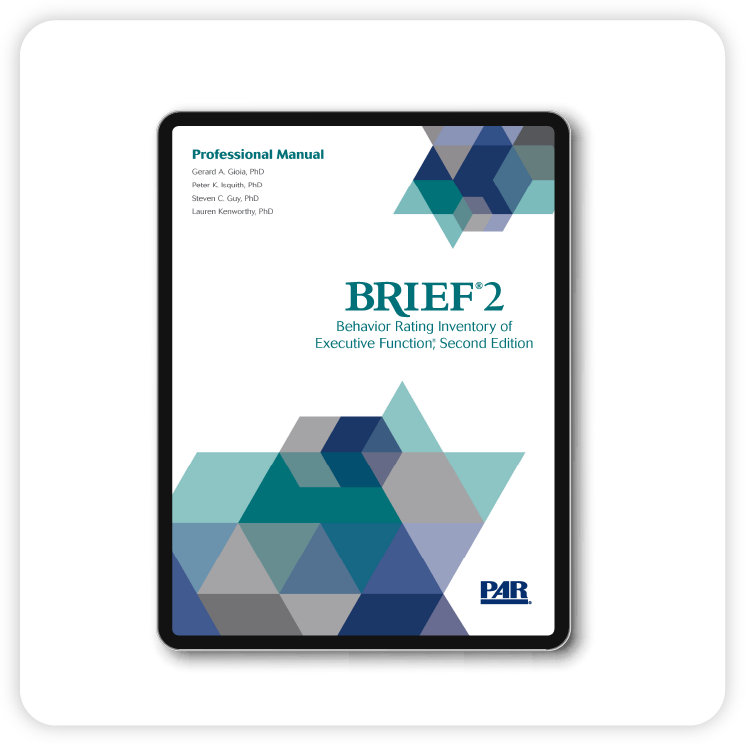
The Behavior Rating Inventory of Executive Function, Second Edition, is a proven measure of executive functioning across the life span including the BRIEF-P for preschool age students and the BRIEF2A for students transitioning out of high school. Use it as part of your battery with students with suspected self-regulation concerns such as autism, ADHD, and learning disabilities.
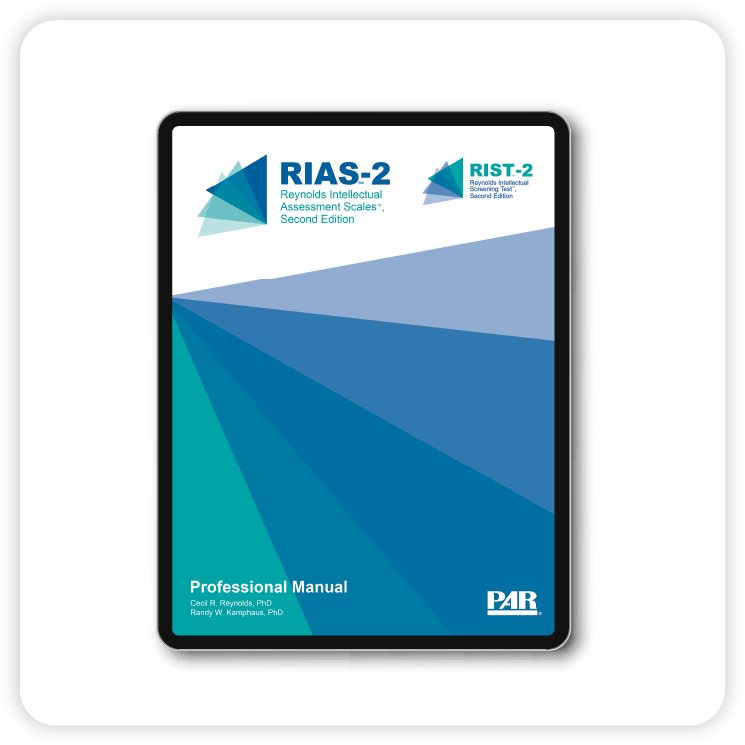
The Reynolds Intellectual Assessment Scales, Second Edition, is a reliable and valid measurement of g including verbal and nonverbal processing speed. Use it as a stand-alone intellectual assessment or as part of a larger battery to help diagnose intellectual or learning disabilities, and as a way to determine educational placement. Administer digitally or on paper.
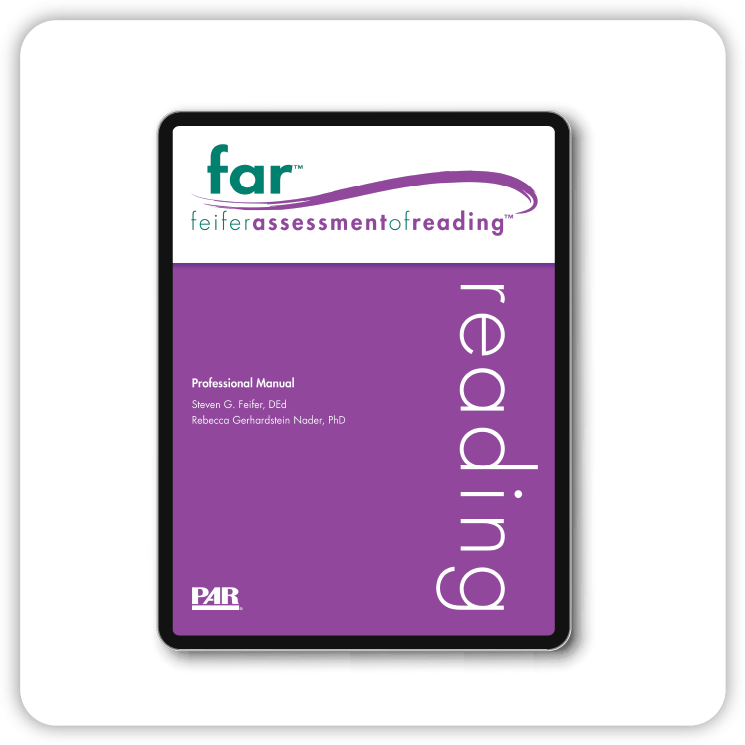
The Feifer Assessment of Reading doesn’t just indicate IF a student may have a reading disorder—it goes deeper to tell you WHY the student is struggling—identifying likely dyslexic subtypes. The FAR can measure for dysphonetic dyslexia, surface dyslexia, mixed dyslexia, and reading comprehension deficits, informing decisions about appropriate interventions.
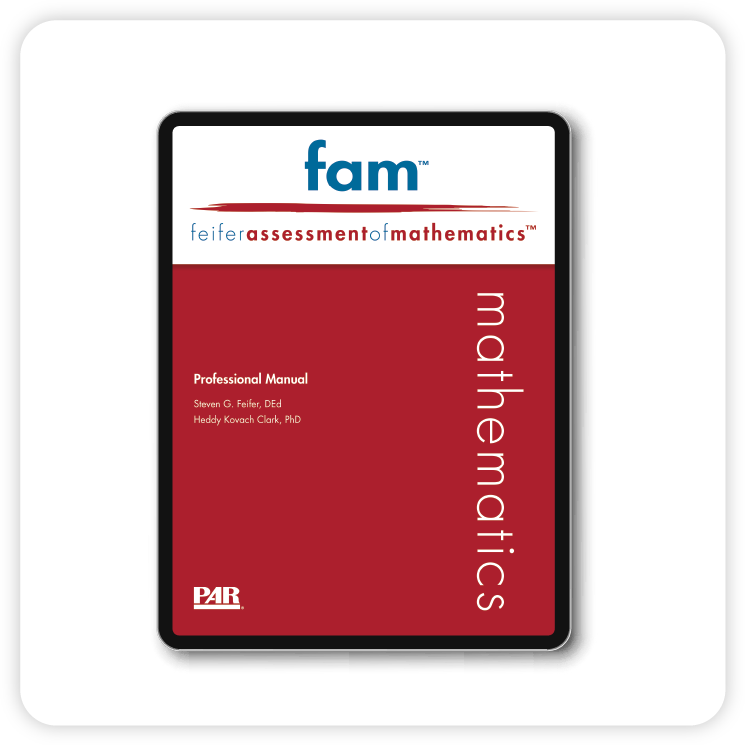
The Feifer Assessment of Mathematics has advantages over traditional academic tests because you learn WHY the student is where they are, without having to administer multiple tests to find out. The FAM can identify the specific type of dyscalculia, whether it is verbal, procedural, or semantic. Plus, you receive targeted interventions that can be used to build an IEP.
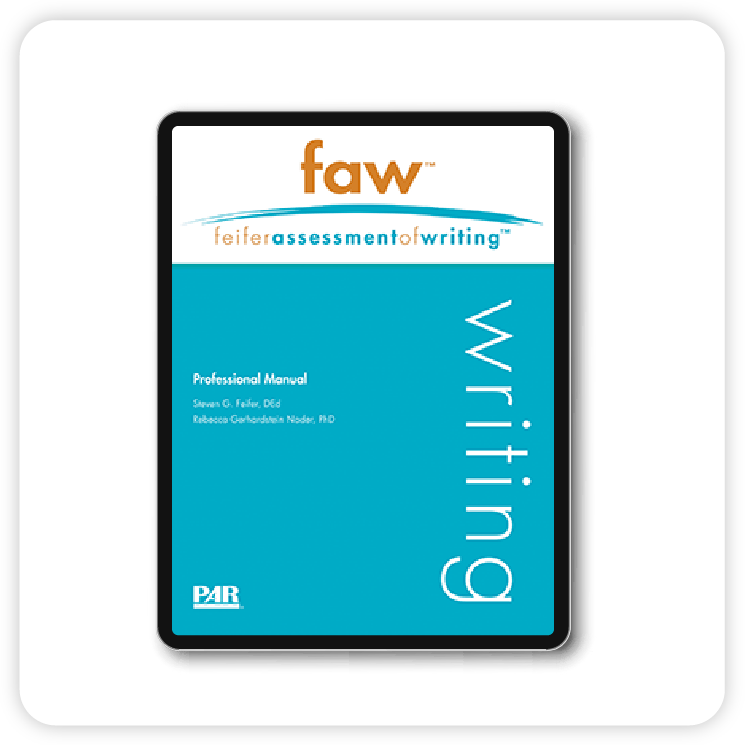
Is it a cognitive, linguistic, or motoric issue affecting a student's writing skills? Find out with the Feifer Assessment of Writing, a diagnostic achievement test designed to examine the underlying processes that support proficient written language skills. The FAW can identify the possibility of dysgraphia, and determine the specific subtype (graphomotor, executive, and dyslexic).
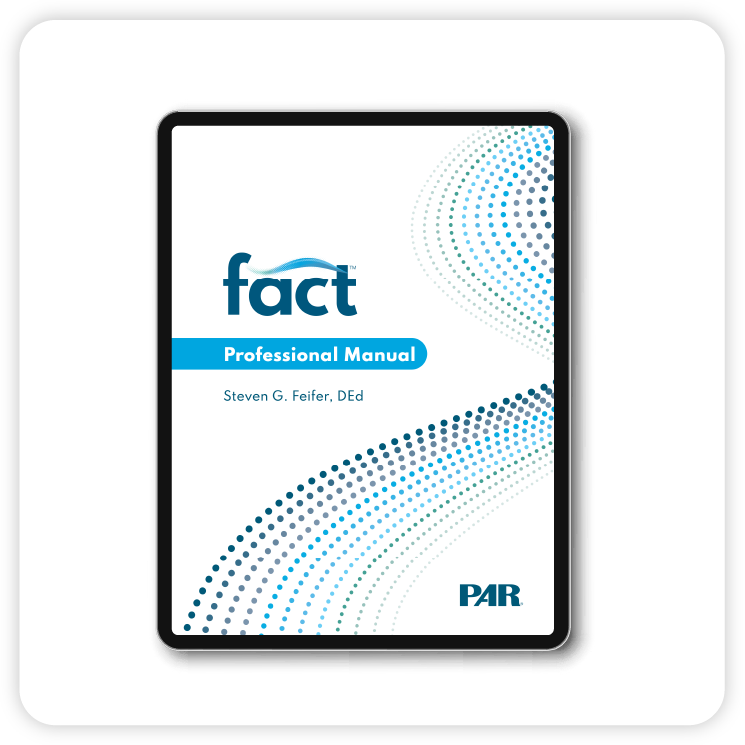
The Feifer Assessment of Childhood Trauma is the only instrument measuring how stress and trauma impact academic, behavioral, emotional, and physiological functioning in school-based settings. The FACT provides recommendations to help with IEP and 504 plans. Use to screen children within a multi-tiered system of support (MTSS) delivery model.
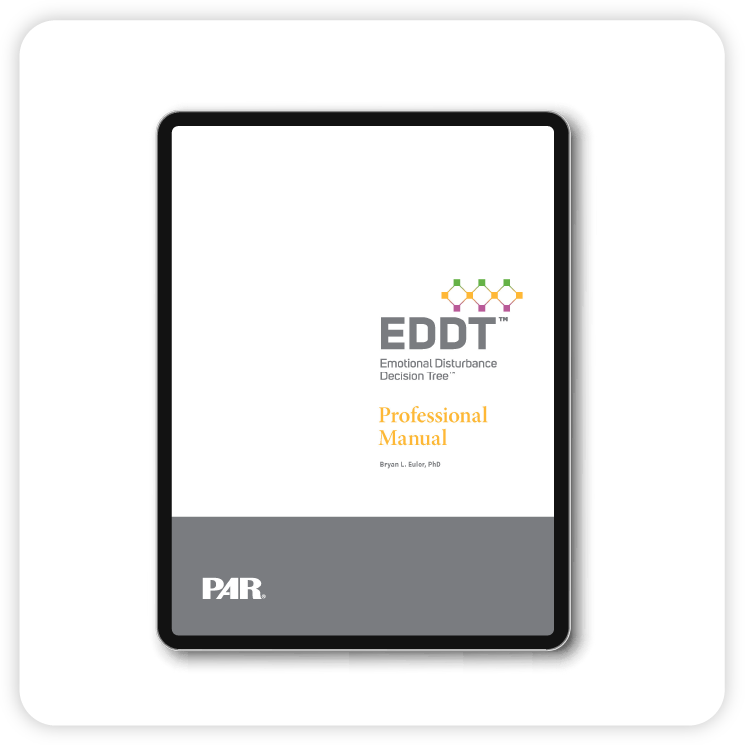
The Emotional Disturbance Decision Tree makes it easier to determine if your student meets federal criteria to qualify for special education services because it maps directly to IDEA criteria. By assessing from the teacher, parent, and student perspectives, it addresses the broad emotional and behavioral nuances of children who may require special education services for emotional disturbance.
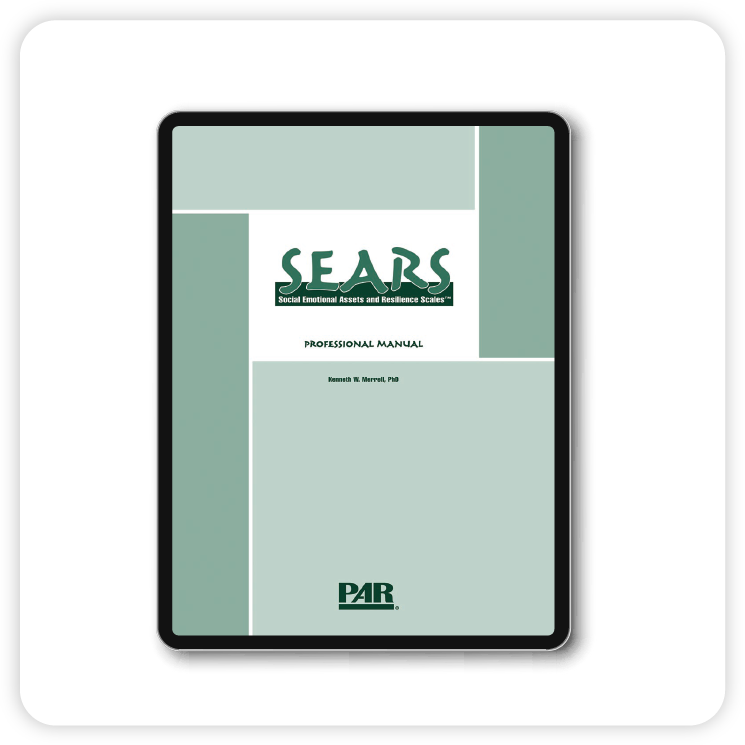
The Social Emotional Assets and Resilience Scales is a strengths-based tool that measures social–emotional assets in children and adolescents. Focusing on a child's strengths, it can be used with children and adolescents who exhibit a variety of clinical problems or who are at high risk for developing such problems. Includes separate child, adolescent, parent, and teacher forms.
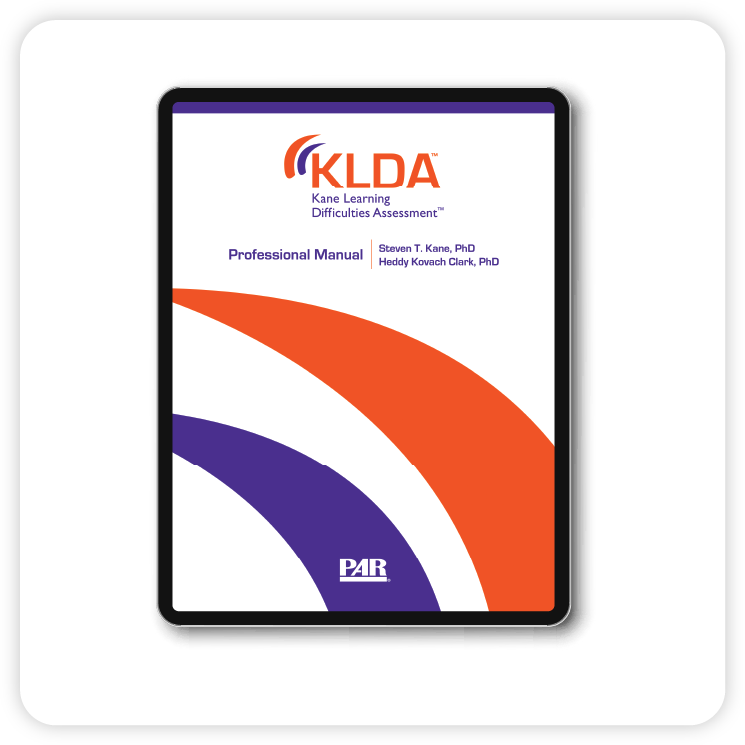
In only 15 minutes, the Kane Learning Difficulties Assessment screens college-age students for weaknesses in key areas, including reading, writing, math, listening, concentration, memory, organization, time management, oral presentation, self-control, pressure, and anxiety. It can be administered by any mental health or academic professional in a group or individual setting.
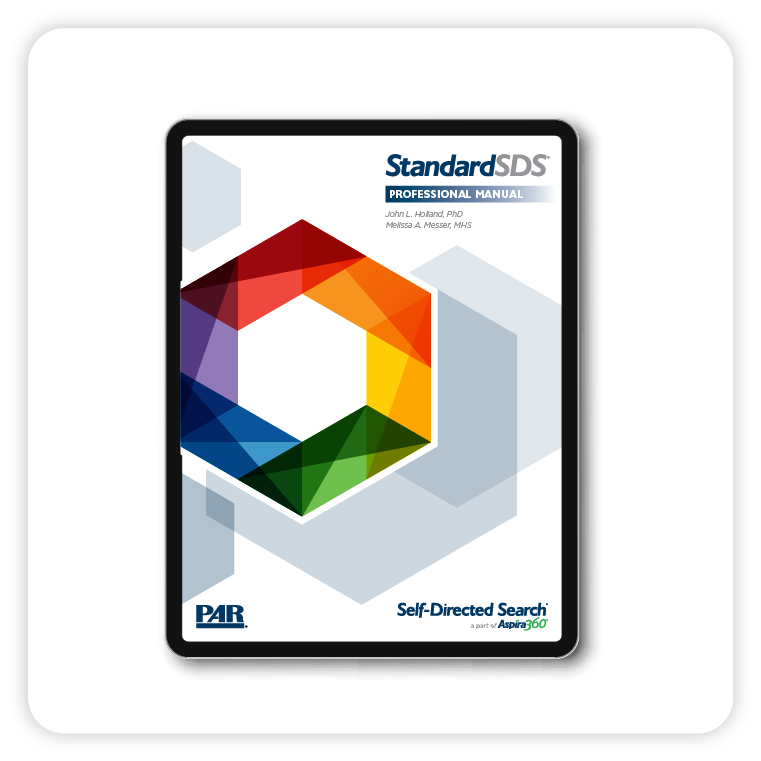
The Self-Directed Search is a proven career assessment tool that matches a student's personality to fields of study, education fields of study, and career choices. You can easily give the SDS to your high school or college students online, allowing them to feel confident about preparing for a career that fits them. The SDS then generates a customized report that can be saved, sorted, and revisited.
![]()
Gain flexibility, affordability, and choice.

Our School & Learning video playlist offers insights into some of our most popular tools for students ranging from PreK to college.

We offer onsite product-specific training, career development webinars, talent solution workshops, and author presentations.

Choose from almost 50 products in non-English languages plus gain access to other language resources.
No matter where you work—for a K-12 school district, a university, or other educational organization—having the right instruments and expertise is crucial for helping students achieve their best. Our team of highly qualified educational professionals brings extensive experience and practical insights to help you navigate complex assessment challenges effectively.
Collaborate with Us!
Let us create the perfect solution for you by customizing a battery to meet your specific needs.


The mental health crisis has become an increasingly pressing issue in society, affecting individuals across various ages and professions. Teachers and school staff are no exception—increasing academic stress for their students coupled with the challenges of the educational system have led to a situation where many teachers are facing their own mental health concerns.
Teachers have long been known for their dedication and passion for education. However, the increasing demands and expectations placed on them have taken a toll on their mental wellbeing. Factors such as heavy workloads, administrative pressures, student behavioral issues, and the need to meet academic standards have created an environment that can lead to burnout, anxiety, depression, and chronic stress.
Teachers are often expected to fill many roles—educators, counselors, mentors, and caregivers. They invest their time and energy into supporting their students’ well-being, often neglecting their own. This neglect, in addition to persistent stress, emotional exhaustion, and a lack of work–life balance can contribute to feeling overwhelmed, frustrated, and even a loss of passion for their occupation. Data supports this as more than 270,000 teachers have left the profession each year since 2016, and the trend is expected to continue through 2026, according to the U.S. Bureau of Labor Statistics.
This isn’t a new problem—relative to other professionals, teachers report experiencing significantly more stress and higher levels of mental health problems. According to a study conducted by the American Federation of Teachers, 21 percent of educators characterized their mental health as not good for 11 or more days out of the previous 30 days, which is significantly higher than respondents in the general public, of whom less than 10 percent poor mental health during that same time period.
What can teachers do to prioritize their mental health?
Here are four ways teachers can be proactive about protecting their mental health and preventing burnout:
Past studies showed that teachers spend approximately 1,913 hours teaching annually. For comparison purposes, an average full-time employee in any industry works about 1,932 hours spread over 48 weeks. However, teachers work close to that before any other activities, such as mentoring students, leading student organizations, and coaching teams, all of which is termed “extra-role time” behavior. Teachers who engage in extra-role time at night or on weekends, in addition to their already heavy workload, may feel like work begins to creep into their own time, leading to a poor work–life balance, which then plays a role in burnout and poor mental health.
Furthermore, chronic absenteeism has risen in both students and staff, meaning that many schools that were already short-staffed are now asking their teachers to do even more—covering classes when other teachers miss school, giving up free periods, and relying on administrators to cover where they can.
Research has shown that teacher morale is directly related to student achievement and sets the tone for the classroom. Teachers are also more likely to retire early or stop working if they are depressed or don’t feel emotionally or physically well, and it is well-established that states of high stress can negatively impact immunity and physical health.
What can schools do to help prevent teacher burnout?
To mitigate the factors contributing to burnout and poor mental health, proactive measures must be taken before the school year begins. Schools can support teachers by implementing the following strategies:
Prioritizing teachers' mental health is essential for creating a healthy and productive learning environment. Teachers and school staff have an enormous impact on the lives of students—being sure they are taking proactive measures to support their mental health is an utmost priority for every community.
References
American Federation of Teachers. (2017). 2017 Educator Quality of Work Life Survey. https://www.aft.org/sites/default/files/2017_eqwl_survey_web.pdf
American University School of Education. (2021). Addressing teacher burnout: Causes, symptoms, and strategies. School of Education Online Programs. https://soeonline.american.edu/blog/teacher-burnout/
Bosquet, S. (2012). Teacher burnout: Causes, cures, and prevention. American International College, pp. 1-22. https://eric.ed.gov/?id=ED534527
Chang, M. (2009). An appraisal perspective of teacher burnout: Examining the emotional work of teachers. Educational Psychology Review, 21, pp. 193-218. https://psycnet.apa.org/record/2009-16757-001
Roloff, M.E., & Brown, L.A. Extra-Role Time, Burnout and Commitment: The Power of Promises Kept. Business Communication Quarterly, 2011, 74(4), pp. 450-474.[2,9,11,14,22,25] https://www.researchgate.net/publication/254078981_Extra-Role_Time_Burnout_and_Commitment_The_Power_of_Promises_Kept